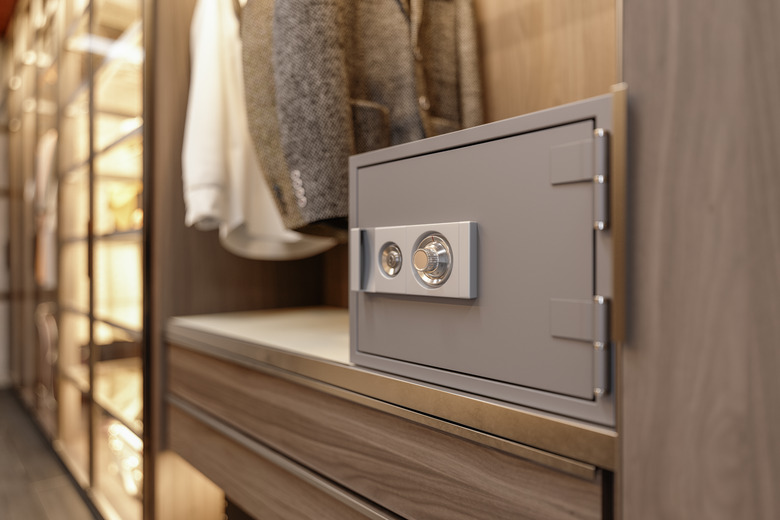How To Absorb The Moisture In A Safe
We may receive a commission on purchases made from links.
Safes are designed to keep bad guys and fires out, but they can't always block moisture from reaching your valuables. Finding ways to absorb the moisture in a safe can prevent damage to the things you have stored inside it. The location and how you use the combination or electronic safe can also impact the moisture levels.
Causes of Moisture in Safes
Causes of Moisture in Safes
General high humidity in your home can increase the moisture level inside your safe. Items that you put in the safe often have at least a little moisture in them, which can release into the safe. If you buy a safe in the winter, the cold temperature of the safe can create condensation as it warms up inside your home. Fireproof and waterproof safes have airtight seals, so once moisture gets inside, it can't evaporate.
Why Safes Need Drying Out
Why Safes Need Drying Out
The purpose of a safe is to keep valuable items secure. Many valuable items are very sensitive to moisture. Important documents can get wrinkled or be destroyed to the point of not being readable. Moisture can tarnish or corrode anything made of metal, including firearms, coins, and jewelry. Photographs can deteriorate due to moisture.
Another issue is mold and mildew growth in the safe and on your belongings. The dark, moist environment is ideal for mold growth. Mold can destroy many items, and it can be dangerous to your health if you breathe in the spores. Keeping moisture levels low in the safe prevents damage and mold growth.
Open the Safe Regularly
Open the Safe Regularly
When you buy a new safe, give it at least 24 hours to acclimate to your home's conditions. Leave the door open while it acclimates. Opening your safe regularly helps it air out and dry up the moisture inside. About every two weeks, open your safe for at least 20 to 30 minutes. Look for signs of moisture issues during this time to determine if you need to add or replace moisture-absorbing materials.
Choose a Dry Location
Choose a Dry Location
The safe's location can increase or decrease the likelihood of moisture getting inside. Choose a dry location in your home. Some areas tend to have higher humidity than others. For example, basement humidity levels are often higher than in other areas due to the cooler temperature and underground location. If you have to keep the safe in a humid area, running a dehumidifier can help reduce the humidity in the space, which can protect your safe from moisture.
Use Moisture-Absorbing Products
Use Moisture-Absorbing Products
Sometimes you can't escape humidity, especially if you live in a humid climate. Placing moisture-absorbing products in the safe can help soak up the extra humidity before it destroys your belongings or causes mold to grow. You'll need to replace these odor-absorbing materials regularly since they can only absorb so much moisture.
Moisture-absorbing products you can use in your safe include:
- Desiccant packs: These little packets, usually filled with silica gel, fit easily into safes of all sizes. Desiccant packets absorb the moisture, and some can be microwaved and reused.
- Calcium chloride: Some moisture-absorbing products use calcium chloride as a moisture absorber.
- Rice: Using rice to absorb moisture is an inexpensive option, and you might already have it in your pantry. You can place a small bowl of rice in the safe or create a pouch by gluing two coffee filters together with rice inside.
- Baking soda: Another pantry staple that can absorb moisture in your safe is baking soda. Put a small bowl or open box of baking soda in the safe.
Install Safe Dehumidifier Gadgets
Install Safe Dehumidifier Gadgets
You can also get specialty products designed to dehumidify safes. One option is a safe dehumidifier rod, which raises the temperature in the safe slightly to decrease moisture. They're often designed for use in gun safes. You can also find mini dehumidifiers that use silica gel to decrease humidity.
